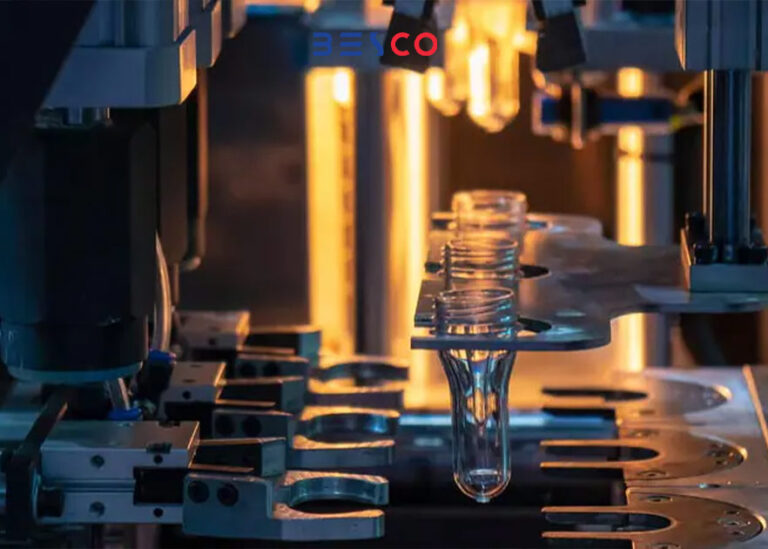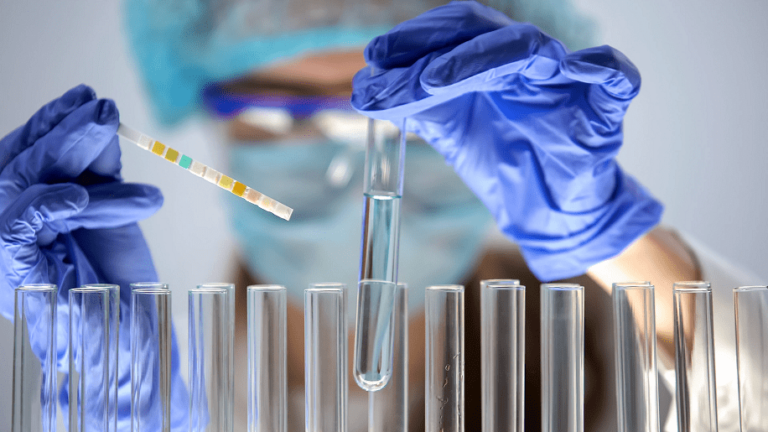Bottled Water Production Line – Consultancy to Setup
Setting up a bottled water production line involves several key stages, each requiring careful planning and precision. Below are the main stages involved in establishing a bottled water production line:

Stages of the Bottled Water Production Line:
- Water Preparation and Purification
This stage includes the filtration and preparation of water to ensure its quality and safety. The purification processes include the following:
- Filtration: Removal of suspended particles and physical impurities from water.
- Reverse Osmosis (RO) Systems: To remove ions and excess minerals.
- UV Disinfection: Using ultraviolet light to kill microorganisms and bacteria.
- Carbon Filters: Removal of chemicals and improvement of taste and odor.
- Packaging Container Production
The production or acquisition of suitable bottles and caps for packaging the bottled water is also part of the process. The bottles must be made from high-quality, hygienic materials. The stages of bottle production include:
- Injection Molding Machines: To produce preforms and plastic caps through the injection molding process.
- Blow Molding Preforms: Using the blowing process to shape preforms into the final size and shape of bottles.
- Filling the Bottles
In this stage, the purified water is transferred into plastic bottles. This process is automated to prevent contamination. Filling machines can operate as follows:
- Gravitational Fillers: Using gravity to fill bottles.
- Pressure Fillers: Using pressure for faster and more precise filling.
- Volumetric Fillers: For accurate measurement of the water volume in each bottle.
- Labeling and Packaging
After the bottles are filled, they are labeled and packaged. The labels must include information such as production date, expiration date, and product details. Labeling and packaging stages include:
- Label Printing: Printing the necessary information on labels.
- Label Application: Automated application of labels on bottles.
- Final Packaging: Packaging the bottles into cartons or larger bundles for distribution.
- Automatic Labeling Machines: For applying labels on the bottles.
- Date Printing Machines: For printing production and expiration dates on the bottles.
- Shrink Wrapping Machines: For packaging bottles into larger bundles.
- Quality Control
At this stage, the final products are inspected for quality and safety to ensure that all health standards are met. Quality control stages include:
- Chemical and Microbiological Testing: Examining the water quality in terms of chemical and microbiological factors.
- Visual Inspection: Visually inspecting bottles to ensure there are no external defects.
- Transportation and Storage Equipment
- Conveyor Belts: For transferring bottles along the production line.
- Pallets and Transport Boxes: For storing and transporting finished products.
- Appropriate Vehicles: For distributing products to the market.
- Distribution and Sales
Finally, the packaged products are distributed to the market. This stage involves delivering the products to stores and sales centers.
Benefits of Setting Up a Bottled Water Production Line:
- Meeting Market Demand
With the growing demand for bottled water due to health concerns and water quality, setting up a bottled water production line can help meet market needs and create new business opportunities. - Product Quality and Safety
By using advanced purification and packaging technologies, you can produce a high-quality product free from microbial and chemical contaminants. This will attract consumers’ attention. - Cost Reduction
Mass production of bottled water can reduce production costs. By using automated machinery and optimizing processes, you can increase efficiency and reduce operational costs. - Product Diversity
With a bottled water production line, you can offer a variety of products such as flavored water, mineral water with different minerals, and various packaging options. This diversity can help attract a broad range of customers. - Job Creation
Setting up a bottled water production line can create new job opportunities and contribute to the economic development of the region. This can improve the social and economic status of the community. - Sustainability and Environment
By using advanced technologies and recyclable packaging materials, you can help preserve the environment. This can create a positive brand image in the minds of customers. - Increased Profitability
Given the high demand and broad market for bottled water, setting up a production line can help increase profitability for your business. This can support the development and expansion of your activities in the future.

What Raw Materials Are Needed for a Bottled Water Production Line?
To produce bottled water, several raw materials and equipment are needed, each playing a crucial role in the production process. Here are the main raw materials:
- Natural Water
Bottled water is extracted from natural sources such as springs, mountains, or deep wells. The water must be of high quality and free from chemical and microbial contamination. - PET Granules
Polyethylene Terephthalate (PET) granules are used to produce plastic bottles. This material is suitable for making bottled water bottles due to its clarity, strength, and high recyclability. - HDPE Granules
This material is used for producing bottle caps. High-Density Polyethylene (HDPE) granules are ideal due to their durability and resistance. - Labels
Labels are used to provide product information, such as brand name, production date, expiration date, and product specifications. These labels must be made from materials resistant to water and moisture. - Shrink Film
Shrink film is used for final packaging of bottles and for creating multi-bottle bundles. The film shrinks around the bottles when heated, creating tight and secure packaging. - Additives (If Needed)
In some cases, additives such as minerals or flavorings are added to improve the water’s quality and taste.
These raw materials help create an efficient and hygienic bottled water production line.
What Additives Are Added to Bottled Water?
In bottled water production, some additives may be added to enhance the quality, taste, and nutritional value of the water. These additives include:
- Minerals
- Calcium: For strengthening bones and teeth.
- Magnesium: For improving muscle function and the nervous system.
- Potassium: For regulating blood pressure and heart function.
- Sodium: For balancing electrolytes and cell function.
- Vitamins
Some bottled waters may contain added vitamins, such as Vitamin C and B vitamins, to boost the immune system and energy levels. - Electrolytes
Electrolytes like sodium, potassium, and chloride are added to the water to help balance the body’s electrolytes, especially in sports and athletic waters. - Flavorings
Some bottled waters are flavored with natural or artificial flavorings to improve their taste. These may include fruit extracts or natural essences. - Carbon Dioxide
In sparkling water, carbon dioxide is added to create fizzy bubbles and give the water a fresh taste. - Fluoride
In some cases, fluoride is added to water to help strengthen teeth and prevent cavities.
These additives contribute to improving the quality and nutritional value of bottled water and can meet various consumer needs.
